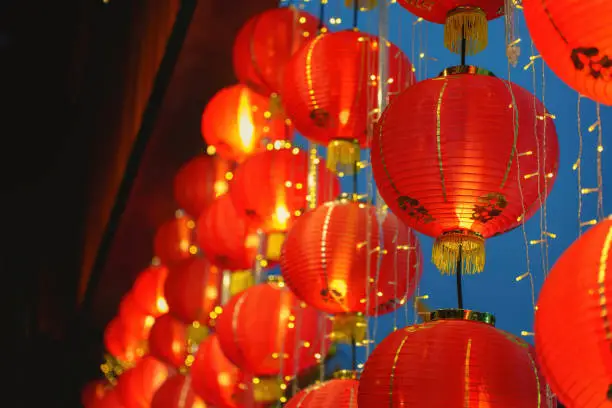Chinese New Year, also known as the Lunar New Year or Spring Festival, is one of the most significant holidays in Chinese culture and is celebrated by millions across Asia and the world. Unlike the Gregorian calendar New Year, Chinese New Year follows the lunar calendar, meaning it falls on a different date each year, usually between January 21 and February 20. The holiday ushers in a new year based on the Chinese zodiac, with each year represented by an animal from the 12-year zodiac cycle.
When is Chinese New Year?
The date for Chinese New Year changes annually based on the lunar calendar, aligning with the first new moon of the year. For 2025, Chinese New Year will begin on January 29, marking the start of the Year of the Dragon, one of the most revered symbols in Chinese culture, known for strength, courage, and good fortune.
The Lunar Calendar and the 12 Zodiac Animals
Chinese New Year’s shifting dates are due to the traditional lunisolar calendar, which is influenced by the moon’s cycles. This means that while the holiday falls within a specific range, its exact date varies from year to year. The 12 animals in the Chinese zodiac cycle each represent a different year and are believed to influence people’s personalities, fortunes, and even compatibility with others.
The 12 animals in the cycle are as follows:
- Rat
- Ox
- Tiger
- Rabbit
- Dragon
- Snake
- Horse
- Goat
- Monkey
- Rooster
- Dog
- Pig
2024’s Year of the Dragon will end on January 28, 2025, giving way to the Year of the Snake.

Chinese New Year Traditions and Customs
Chinese New Year is celebrated with a host of traditional activities and customs, many of which are rooted in ancient practices and are meant to bring good fortune and prosperity for the year ahead.
- Reunion Dinners
- On the eve of Chinese New Year, families come together for the Nian Ye Fan, or reunion dinner, considered the most important meal of the year. Dishes are prepared with symbolic meanings, such as dumplings (representing wealth) and fish (representing abundance), and the meal often includes traditional recipes passed down through generations.
- Red Envelopes (Hongbao)
- One of the most anticipated traditions for children and young adults is receiving hongbao, or red envelopes filled with money. The red color is symbolic of luck, prosperity, and happiness, while the money inside represents blessings for the new year. Typically, elders give these envelopes to younger family members as a gesture of good fortune.
- Lion and Dragon Dances
- Lion and dragon dances are performed to ward off evil spirits and bring good luck. The dragon, in particular, is a symbol of power and good fortune, believed to bring prosperity and safety to the community. The dancers, accompanied by drummers and other musicians, create a lively atmosphere in many communities.
- Decorations
- Homes and streets are decorated with symbols of good fortune and prosperity, including red lanterns, paper cuttings, and couplets featuring auspicious phrases. Red, gold, and orange are common colors in Chinese New Year decorations, as they symbolize luck and wealth.
- Firecrackers and Fireworks
- Traditionally, firecrackers were set off to frighten away the mythological beast Nian, who was said to terrorize villagers at the start of each year. Today, fireworks and firecrackers are used to mark the holiday, adding excitement and celebration to the festivities.

The Lantern Festival
The culmination of Chinese New Year celebrations is the Lantern Festival, which takes place on the 15th day of the first lunar month. During this festival, people light and display lanterns, which come in all shapes, sizes, and colors, often bearing messages of hope and prosperity. Lanterns are often decorated with riddles, providing fun challenges for children and adults.
In cities and towns across China and other countries, lantern parades and light shows are organized, making for a grand, colorful display. The Lantern Festival symbolizes unity, harmony, and new beginnings as families gather together to mark the end of the New Year festivities.
Significance of Chinese New Year Around the World
Chinese New Year is celebrated in countries beyond China, including Singapore, Malaysia, Thailand, and Indonesia. In places with significant Chinese communities, such as San Francisco, New York City, and London, festivities often include parades, cultural performances, and food festivals.
Also Read: Christmas Miracles: Stories Of Hope, Love, And Wonder
Email your news TIPS to Editor@Kahawatungu.com — this is our only official communication channel

